
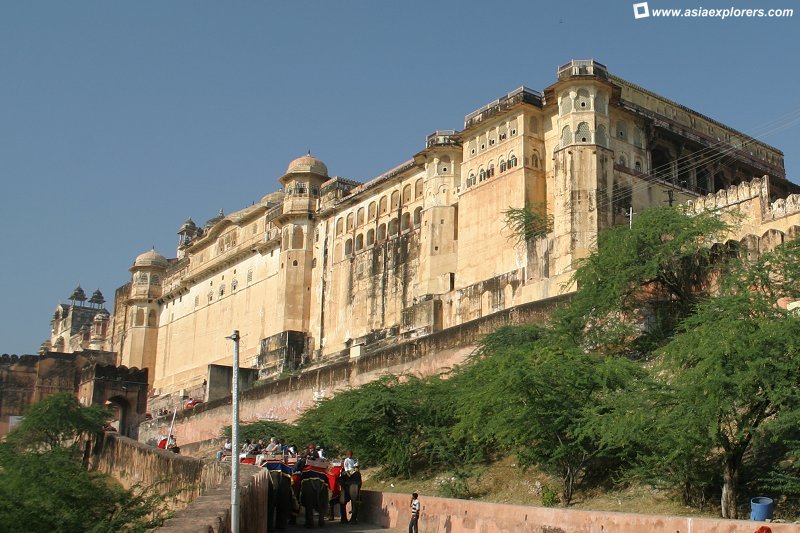 Amber Fort, Jaipur (6 November, 2004)
Amber Fort, Jaipur (6 November, 2004)
Amber Fort (GPS: 26.9857, 75.85061) is a fort built in Jaipur, Rajasthan, in 1592. It represents one of the finest examples of Rajput architecture. Perched high on a barren ridge, Amber Fort commands a panoramic views of the deep narrow valley below and the wider plains beyond. It was the citadel of the Kachhawaha rulers until 1727.
The Kachchawahas (also written Kachhwaha) ruled from Amber, 11 km from Jaipur, for seven centuries. With such a long history, it would not be surprising that Jaipur hold a lot of its archaeological history. While the early structures have either disappeared or badly ruined, those dating from the 16th century onwards are still in a remarkable state of preservation. Of these, Amber Fort still stands strong today. It is the handiwork of three of the Kachchawaha Kingdom's rulers, Raja Man Singh I, and Jai Singh I and II (also called Mirza Raja Jai Singh and Sawai Jai Singh).
Amber Fort is  on the map of Jaipur
on the map of Jaipur
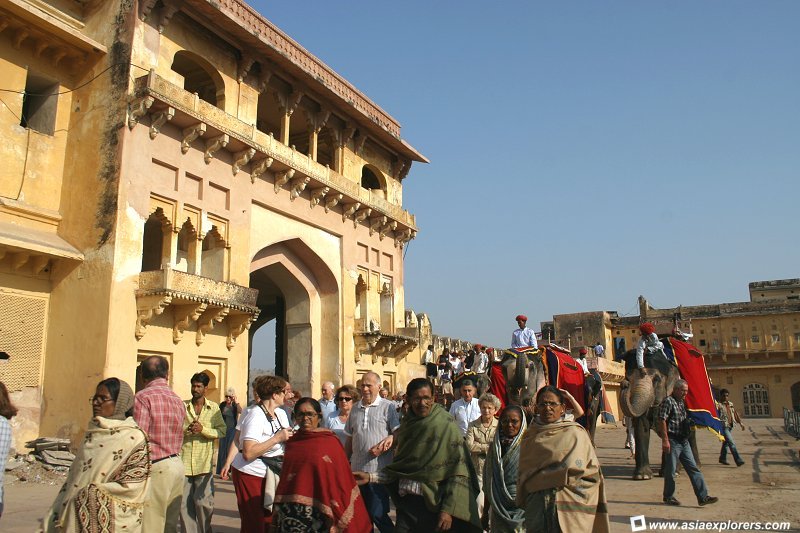 Visitors arrival at Amber Fort on elephant. (6 November, 2004)
Visitors arrival at Amber Fort on elephant. (6 November, 2004)
I can see Amber Fort from my hotel. In fact, the whole mountain range in front of our hotel was topped by Amber Fort and otheer ancient fortresses. It forms an Indian version the the Great Wall.
Like many of today's visitors to Amber Fort, I approached it riding an elephant up the steep ramp. From here, my elephant entered through the grand Singh Pol gateway and continuing to Jaleb Chowk, the courtyard where I disembarked the pachyderm with other members of AsiaExplorers. There were two flights of steps before us, one leading to Shila Mata complex with its enshrined image of the goddess, and the other to the main palace complex.
Amber Fort was only completed in the early 18th century when the threat of Mughal domination was receding. (The Mughal are Muslim rulers who ruled from places like Agra, Delhi and Lahore.) Amber was once the capital of the Mina tribes, who are believed to be the original inhabitants of the region.
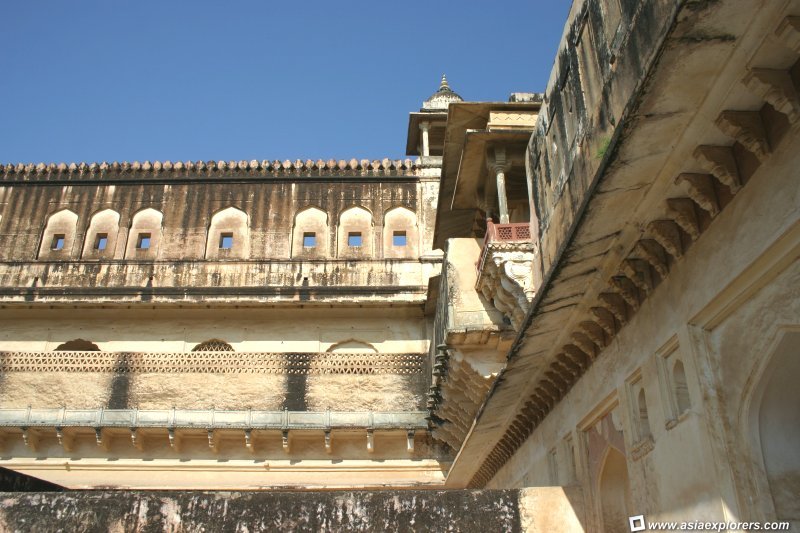 View of Amber Fort. (6 November, 2004)
View of Amber Fort. (6 November, 2004)
At the front courtyard of Amber Fort is the magnificent, pillared hall of the Diwan-I-Am, the Hall of Public Audience, and the two-tiered gateway called Ganesh Pol, painted with the elephant-headed deity Ganesh. Within Amber Fort is a breathtaking chamber whose walls were inlaid with mirrors. It is called Sheesh Mahal. The Jas Mandir on the upper floor, is a superb amalgamation of Mughal and Rajput style of architecture. Here, you find exquisitely carved Jali screens, and fine mirror and stucco work.
Amber Fort is entered through the Dil-e-Aaram garden which is laid out in the traditional Mughal style. From here, a flight of stairs leads to the Diwan-I-Am. Nearby is a small Kali Temple. It has huge doors made of silver. Maharaja Man Singh was a great devotee of Goddess Kali and prayed to the goddess for victory during battles. The larger white marble Shila Mata temple, has the image of Goddess Kali, brought by Raja Man Singh from Jessore in East Bengal (now Bangladesh).
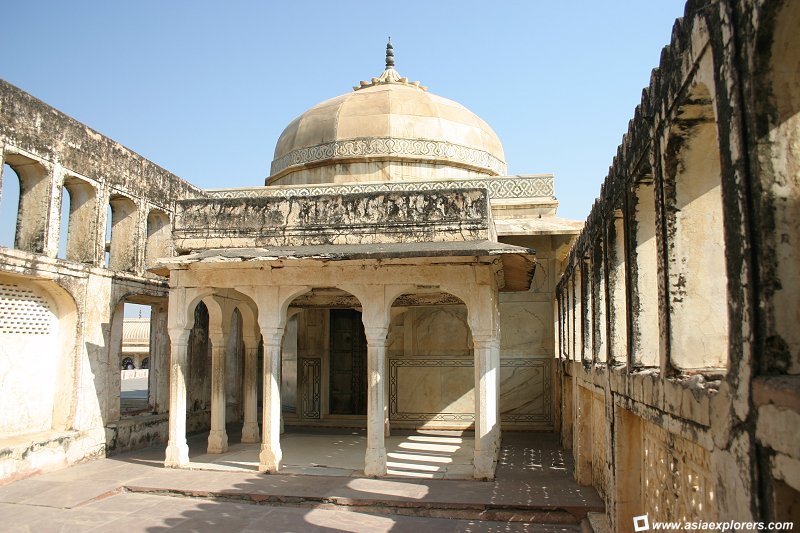 Section of Amber Fort near Jas Mandir, the hall of private audience. (6 November, 2004)
Section of Amber Fort near Jas Mandir, the hall of private audience. (6 November, 2004)
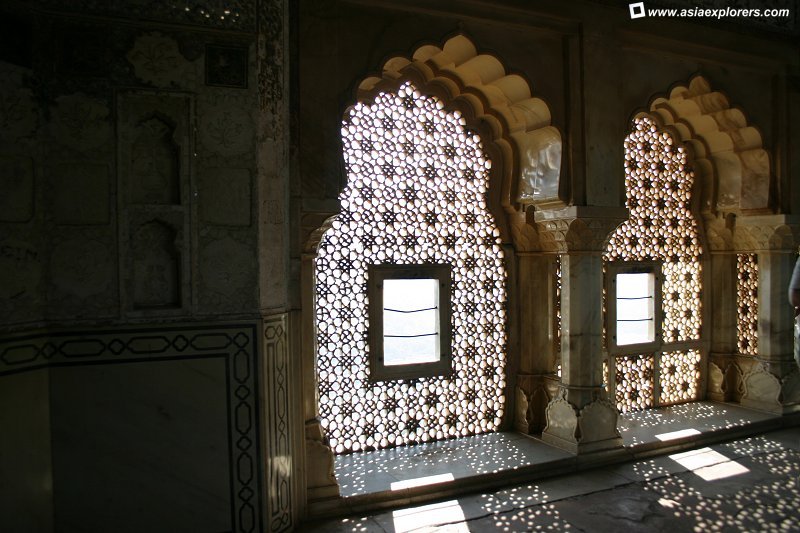 The Jas Mandir, or hall of private audience, has beautifully latticed windows. (6 November, 2004)
The Jas Mandir, or hall of private audience, has beautifully latticed windows. (6 November, 2004)
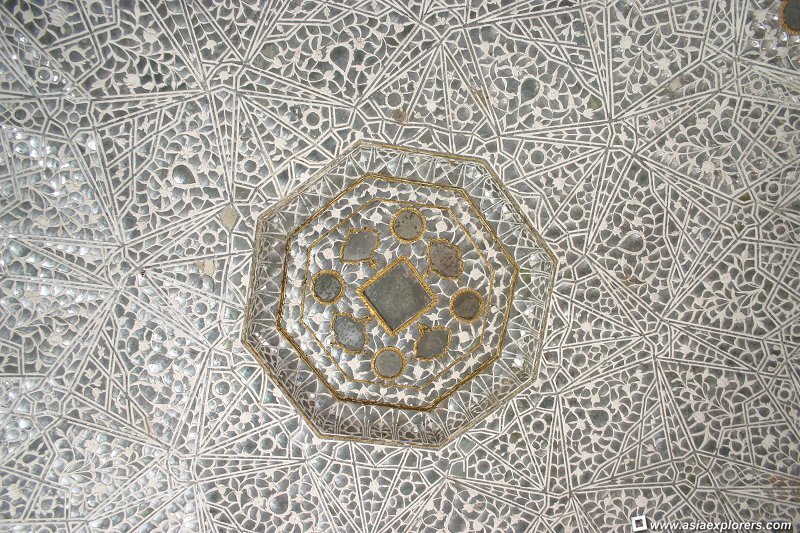 The Sheesh Mahal is a chamber whose ceiling is studded with mirrors. (6 November, 2004)
The Sheesh Mahal is a chamber whose ceiling is studded with mirrors. (6 November, 2004)
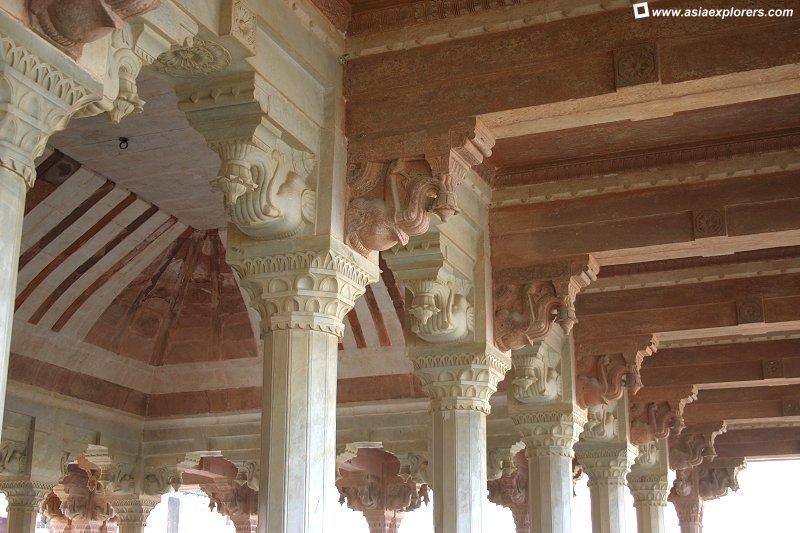 The ornate columns of the Diwan-i-Am of Amber Fort. (6 November, 2004)
The ornate columns of the Diwan-i-Am of Amber Fort. (6 November, 2004)
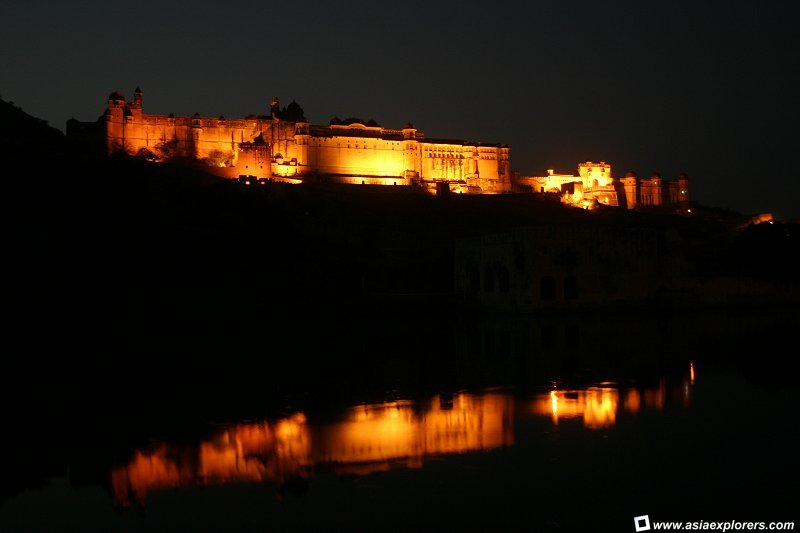 Amber Fort reflected on Maota Lake at night. (6 November, 2004)
Amber Fort reflected on Maota Lake at night. (6 November, 2004)
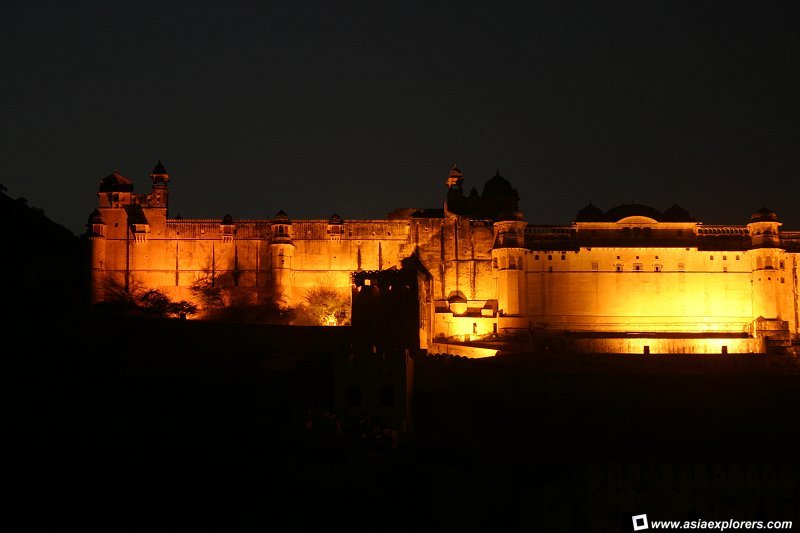 Night view of Amber Fort. (6 November, 2004)
Night view of Amber Fort. (6 November, 2004)
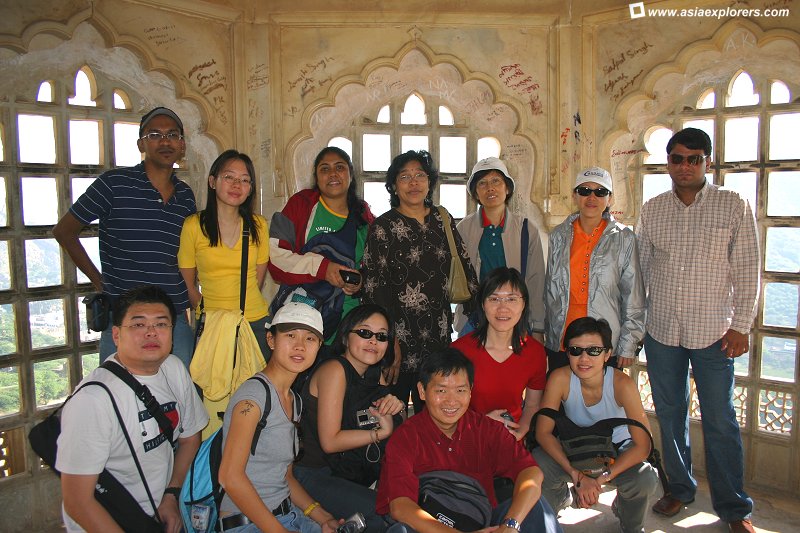 Tim with members of AsiaExplorers in Amber Fort, Jaipur. (6 November, 2004)
Tim with members of AsiaExplorers in Amber Fort, Jaipur. (6 November, 2004)
 Latest updates on Penang Travel Tips
Latest updates on Penang Travel Tips
 Map of Roads in Penang
Map of Roads in Penang
Looking for information on Penang? Use this Map of Roads in Penang to zoom in on information about Penang, brought to you road by road.About this website

Dear visitor, thank you so much for reading this page. My name is Timothy Tye and my hobby is to find out about places, write about them and share the information with you on this website. I have been writing this site since 5 January 2003. Originally (from 2003 until 2009, the site was called AsiaExplorers. I changed the name to Penang Travel Tips in 2009, even though I describe more than just Penang but everywhere I go (I often need to tell people that "Penang Travel Tips" is not just information about Penang, but information written in Penang), especially places in Malaysia and Singapore, and in all the years since 2003, I have described over 20,000 places.
While I try my best to provide you information as accurate as I can get it to be, I do apologize for any errors and for outdated information which I am unaware. Nevertheless, I hope that what I have described here will be useful to you.
To get to know me better, do follow me on Facebook!
Copyright © 2003-2025 Timothy Tye. All Rights Reserved.

 Go Back
Go Back